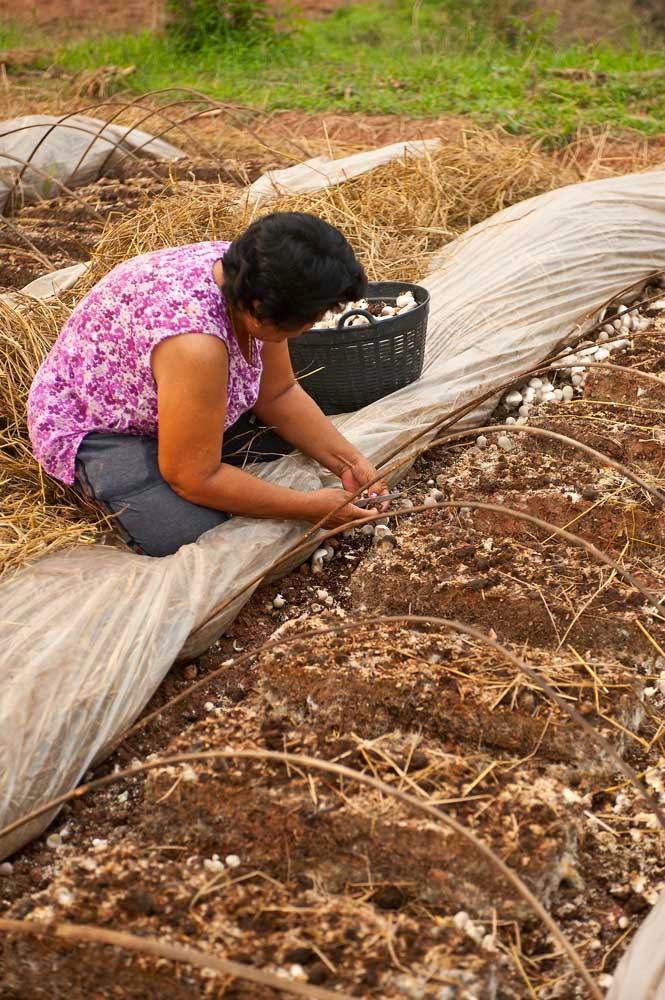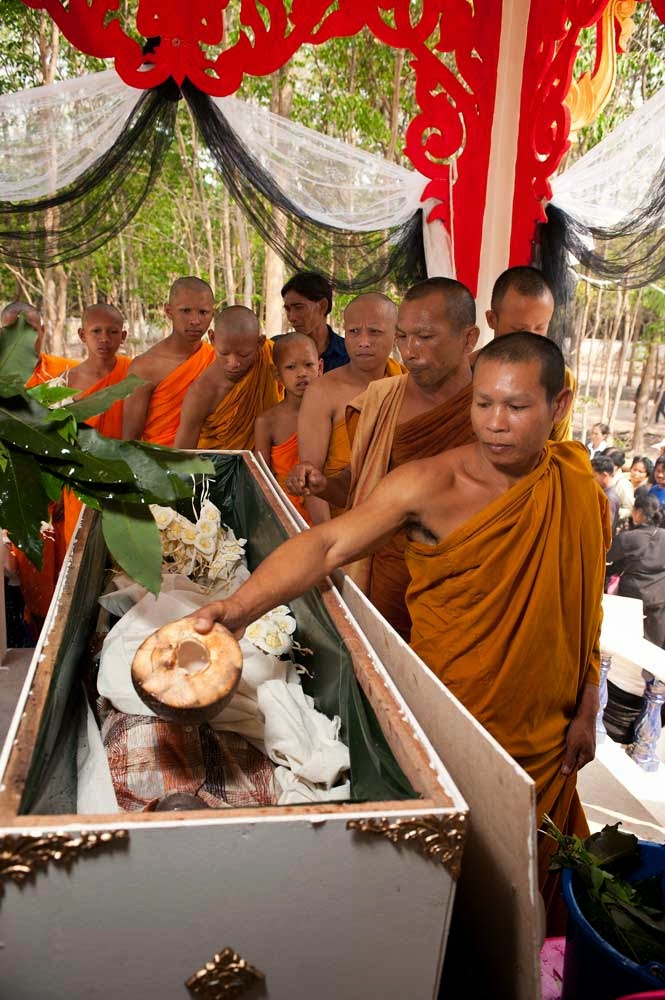Two months ago, 1 February, I photographed and documented the casting of a new bronze statue of Buddha for the new Vihear (Wihan) at the Wat in the forest outside of Ban Maet.
http://hale-worldphotography.blogspot.com/2015/02/casting-wats-new-buddha-statue-day-2.html
After being cast here, the casting traveled to Loei where another larger statue was cast. Later both castings were transported one day south to the factory in Chonburi for final assembly and finishing.
At first it was my understanding that the completed statue would return in a week. It then became two weeks and was actually returned after two months. Returning yesterday was actually very good timing whether intended or not. We are now entering into the Songkran, New Year, season.
Songkran is officially April 13 to 15 ... Monday, Tuesday, and Wednesday. That is the way things are supposed to be. However there is the way things actually are: There is the Saturday and Sunday before the official start of the festival and there are the two days after the official closing of the holiday. The Songkran Festival is also known as "Thailand's 7 Deadliest Days" due to the number of traffic deaths.
Although it is the first week of April, many preparations and rituals related to Songkran Festival are underway. The placing of the new Buddha statue fit quite well into the spirit of the season - a season of joy and happiness.
The celebration of the arrival and placement of the statue was supposed to start at 8:00 A.M. Based upon the issues of scheduling and timing that we experienced for the casting of the statue, we decided to get out to the Wat at 7:30 A.M. to ensure that we did not miss out on anything.
Well the law of averages does exist - even out in rural Isaan. Nothing really happened until 8:30 A.M. when I was asked to haul a bunch (10+) people in our truck out to Highway 2410 which passes along the front of Ban Maet. It turned out that many vehicles and people were assembling alongside the highway. Soon Luang Por Pohm Likit arrived in a decorated truck bearing the new statue on the flat bed. The Monk was also accompanied by a truck bearing a large speaker system and several musicians playing joyous ethnic music. It turned out that the plan was for the truck bearing the statue to lead the procession of the people walking and dancing the 2 KM of dirt road back to the Wat.
I determined that the best place for photographs would be back at the corner just before the Wat. It was another hot morning here and the sun was very bright - not particularly good for photography and definitely not good for standing out in the sun. I walked out to the corner from the Wat and waited, and waited, and waited even some more. I eventually walked back to the Wat and returned with a plastic chair that I set up under the shade from the small farmer's hut at the corner ... and waited some more. Eventually a saamlaw, a three wheeled transport, arrived filled with some dancers. The dancers, I can not honestly call them "girls", were excited to see my camera and posed for a group photo.
 |
| The Dancers Waiting to Join the Procession |
 |
| Buddha Followed By the Dancing Villagers |
 |
| Villagers Following the Statue |
 |
| Arriving at the Wat |
 |
| Duang Escorts the Statue Around the Vihear |
 |
| Some Say "It takes a village to raise a child" - It definitely takes a village to set a statue |
Many of the village men surrounded the statue and grabbed a hold of it. Under the commands of one of the men, they slightly lifted the statue and tilted the statue to a horizontal position. Perhaps a concession to safety - one man placed a mon, small rectangular pillow, at the base of the statue's neck. All went well and without much struggling, the statue was placed and slid into its final location.
Once the statue was set, men poured some water on it and gently wiping the water. squashed bugs, and hand prints from the surface.
It was now time for the daily ritual of the people offering food to the Monks. Yesterday because of the special nature of the day, there were more Monks participating in the ritual. Some Monks from a more established Wat in the vicinity attended the ritual. I suspect that the Abbot from that Wat was necessary to ensure that the process of enshrining the statue was properly done. The Abbot always sits to far left of the lines of Monks - sitting in the front row and to the right of the others. Luang Por Pohm Likit sits to his immediate left. There were two rows of Monks yesterday including several semanans (young boys on their school break as novice Monks).
After the Monks had completed their only meal of the day, the gathered laypeople ate the remaining food - a sort of community breakfast that strengths and reinforces the community as well as family bonds.
After the lay meal had been completed and the area cleaned up, a special ritual was conducted for the new statue. There was a great deal of chanting by the Monks as well as by the laypeople. As is typical for the rituals, the laypeople were lead by a man called a "tapakhao" Tapakhao, the same as a Brahman, are elderly men who were once Monks for a considerable time and have received advanced training in spiritual as well as ritual matters.
I especially enjoy the chanting of the Monks. They chant in the language of the people who first brought Buddhism to Thailand - Pali. The chanting is rhythmic and energetic to the point that is almost hypnotic. The voices of the various Monks seem to compliment if not harmonize with each other. The Senior Monk leads the chanting almost always uses a microphone along with an amplifier. Typically another of older Monks or a younger Monk with greater training will also chant using a microphone and amplification. I have not figured it out yet but every time I witness the chanting, the Senior Monk will pause either to catch his breadth or to check on the chanting of the other Monks. After a short pause he will resume is chanting as if he never skipped a beat. For me, this hesitation and pause adds to the drama and atmosphere of the ritual.
I often reflect and appreciate as I photographing and witnessing the ritual that this has been going on for almost 2,500 years. There is a connection to people for over 100 generations that is repeated every day.
As I look upon the laypeople participating in the rituals, I see babies and toddlers being taught the ways of the ritual - ensuring another generation will be connected.
The new Buddha statue, like all the other Buddha statues, serves as a reminder and focal point of the middle way that Buddhists believe will lead them to liberation ... enlightenment.






















































